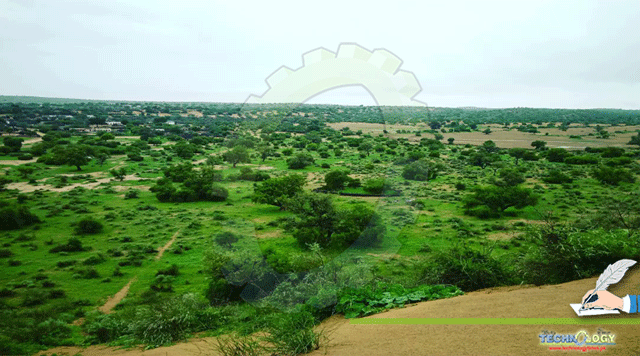Thar is the 17th largest desert in the world and the ninth largest sub-tropical desert. It is spread over 50,000 sq-kms, falling in Pakistan and India.

Thar Desert in Pakistan is located in Tharparkar, Umerkot and Mirpurkhas districts. Tharparkar, one of Sindh’s drought-hit districts, It is an arid area with very low rainfall. The population of Thar is more than 1.6 million people. Known for its rich culture, natural beauty, and peace, Thar is a fertile desert and the livelihood of Thari people depends on rainfall agriculture.
The desert Thar region of Sindh is often faced by droughts, forcing residents to migrate to areas near barrages with their cattle and families, causing various health complications. But for the past two years, the region has been blessed with erratic but bountiful rainfall.
Every country has something unique to offer, whether in culture, architecture, natural beauty, etc. The beauty of Sindh Pakistan, sadly, has not yet been explored fully as compared to other provinces. It is only recently that people have come to know about some sites that they had never heard of before. You all know about the Thar Desert in Sindh. Unlike other barren deserts of Pakistan, and the around world, Thar’s speciality is that it is a fertile desert — which means that in the monsoon season the golden sand gets covered with lush green grass, plants and mushrooms.
Thar Desert is home to many varieties of indigenous trees, herbs and grass. It is the grass that provides feed for more than six million livestock. Almost all parts of Thar, including the hilly areas of Nagarparkar, Islamkot and Chachro, received rain along with thunderstorms. Thari villagers were overjoyed to have the much-awaited rains, and said that although the season of the cultivation of traditional crops was almost over, the current showers would greatly help in recharging the water table and wells and revive withering grass, which was quickly drying for lack of water for over a month. If it rained abundantly, they would be able to store rainwater in natural ponds for use in future.
Rain is an important source of living, particularly for Tharis. The reason of the drought-like situation in other parts of Sindh is because of a very low percentage of forestation. We need to grow plants and keep Sindh green if we want more rain in Sindh. This year’s rains have transformed the harsh landscape and its inhabitants.Thar resident who had migrated to other places to earn livelihood due to shortage of water, are now returned to their villages to resume cattle farming and to plant crops. Farmers are tilling their land, planting seeds, and for the first time in years, expecting a good harvest. The transformation of the desert landscape has attracted tourists from all over Pakistan to marvel at the grass-lined roadways that were, until recently, just drab sand and stone.
After the heavy downpours, the Karoonjhar Hills have become a hub of seasonal tourism and people are thronging here from across the country to see the beautiful foothills, the ancient Jain temples and other picnic points
Thar has returned to life after the recent spell of monsoon. Each and every drop of rain brings joy to the faces of the Thari people. No one knows the importance of rain more than the people of Thar as their life depends on rain.